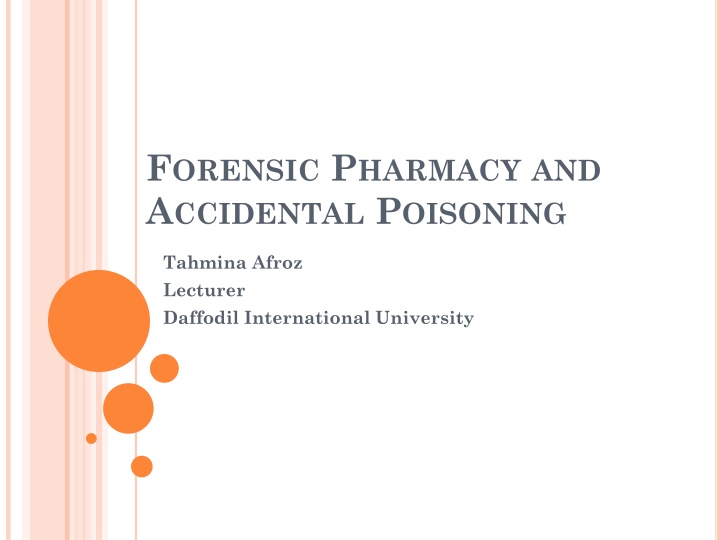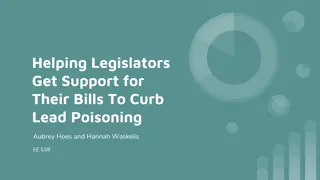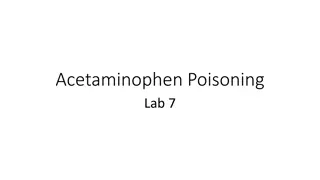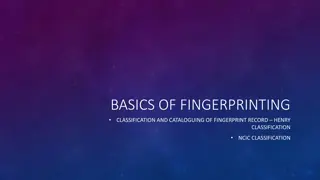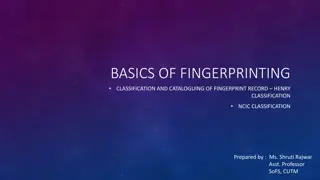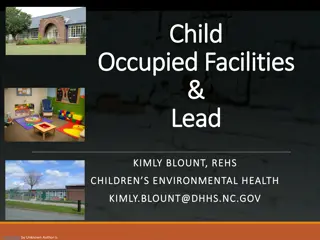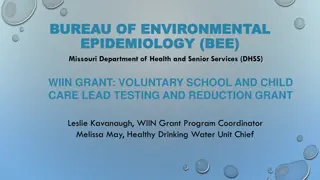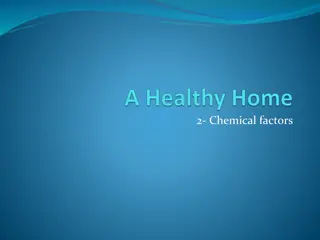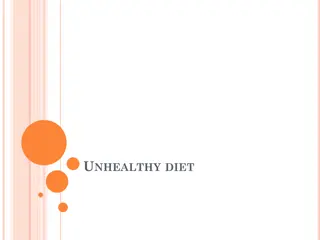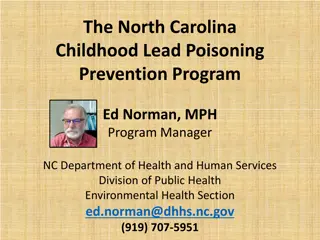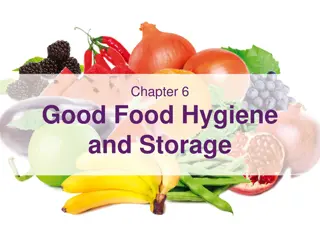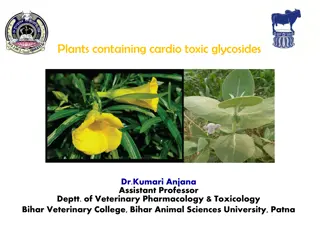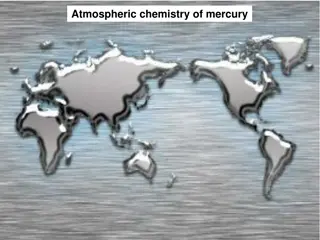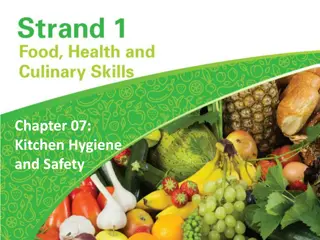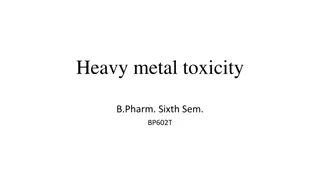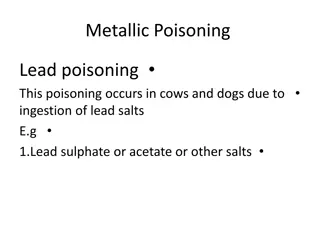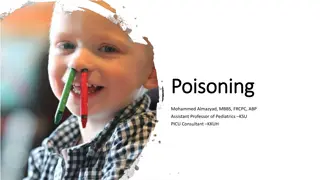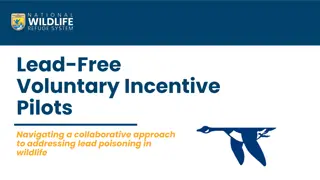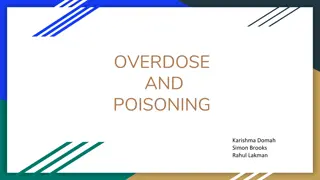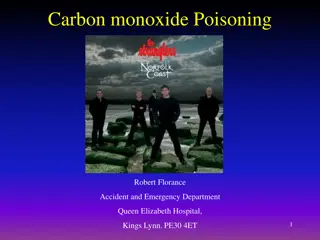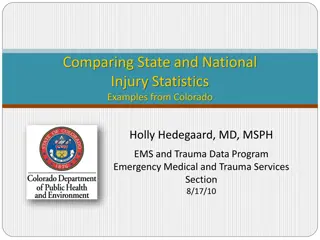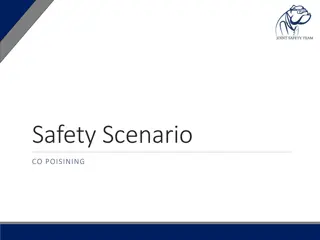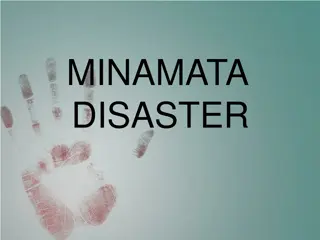Poisoning: Types, Nature, and Classification
Poisoning can result from exposure to toxic substances, leading to adverse effects ranging from illness to death. Explore the types of poisoning, including acute and chronic, and understand the nature of poisoning such as homicidal, suicidal, accidental, and occupational. Learn about the classification of poisons based on their chief symptoms produced. Gain insights into forensic pharmacy and accidental poisoning in this informative content.
Download Presentation

Please find below an Image/Link to download the presentation.
The content on the website is provided AS IS for your information and personal use only. It may not be sold, licensed, or shared on other websites without obtaining consent from the author.If you encounter any issues during the download, it is possible that the publisher has removed the file from their server.
You are allowed to download the files provided on this website for personal or commercial use, subject to the condition that they are used lawfully. All files are the property of their respective owners.
The content on the website is provided AS IS for your information and personal use only. It may not be sold, licensed, or shared on other websites without obtaining consent from the author.
E N D
Presentation Transcript
FORENSIC PHARMACY AND ACCIDENTAL POISONING Tahmina Afroz Lecturer Daffodil International University
WHAT IS A POISON? Poison is a substance (solid/liquid or gaseous) which if introduced in the living body or brought into contact with any part there of will produce ill health or death by its constitutional or local effects or both Ref: The Essentials of Forensic Medicine and Toxicology Dr. K Reddy
POISONING The development of dose related adverse effects following exposure to chemicals, drugs or other xenobiotics Or It is the phenomenon of ingestion or coming contact of any poisonous substance
TYPES OF POISONING 1. On the basis of Severity Acute poisoning- excessive single dose or several I. smaller doses of a poison taken over a short interval of time. II. Chronic poisoning- smaller doses over a period of time, resulting in gradual worsening e.g. Arsenic, Phosphorus, Antimony etc.
III. Sub-acute poisoning- the poisoning lies between acute and chronic poisoning resulting in gradual worsening. IV. Fulminate poisoning- a very high or massive dose of poison at a time results death with a without any sign and symptom and patient become collapse suddenly.
NATURE OF POISONING 1. Homicidal Killing of human being by another human being by administering poisonous substance deliberately without other one s notice 2. Suicidal When poisoning is created by himself/herself to end his/her life
3. Accidental Any poisonous substance taken/administered unknowingly by the person or children. e.g.. Household poisons- nail polish remover, acetone etc. 4. Occupational In professional workers. e.g.. Insecticides, harmful fumes.
CLASSIFICATION OF POISONS 1. According to the chief symptoms produced- Corrosives I. II. Irritants III. Systemic IV. Miscellaneous
I. Corrosives Strong acids- H2SO4, HNO3, HCl a) Strong alkalis- Hydrates and carbonates b) of Na+, K+ andNH3 c) Metallic salt- Zinc chloride, ferric chloride, KCN, silver nitrate, Copper sulphate
II. Irritants Inorganic- a) Nonmetallic- Phosphorus, Iodine, Chlorine i. Metallic- Arsenic, Antimony, Led ii. iii. Mechanical-Powdered glass, hair Organic b) Vegetable- Abrus precatorius, Castor, Croton, Calotropis. i. Animal- Snake and Insect venom, Cantharides ii.
III. Systemic a) Cerebral- CNS depressants- Alcohol, opioids, hypnotics, general anesthetics i. CNS stimulants- Amphetamines, Caffeine Deliriant- Datura, Cannabis, Cocaine ii. iii. Spinal- Nux vomica Peripheral- Conium, Curare Cardiovascular- Aconite, Quinine, HCN Asphyxiants- CO, CO2, H2S b) c) d) e) IV. Miscellaneous- Food poisoning, Botulism
ROUTES OF ADMINISTRATION 1. Inhalation- Volatile gas, Chemical dust, Smoke, aerosol Injectable a) Intra venous- Benzodiazepines, barbiturates, tricyclic antidepressants etc. b) Intramuscular- Benzodiazepines, opioids etc c) Subcutaneous- Botulinum toxin d) Intra-dermal- Local anaesthetic, organophosphates 2. Oral 3. Corrosives, Organophosphorus Through natural orifices Rectum/vagina/urethra Abrus percutaneous, croton, calotropis 4. Through unbroken skin Organ phosphorus, Mercury, Lead 5.
RISK FACTORS FOR POISONING Age i. ii. Location and time iii. Unsupervised home setting iv. Accessibility of the poison v. Lower level of education vi. Depressed adolescents and Adolescent females
RISK FACTORS FOR POISONING i. Age Children 70% Adult-30% Accidental poisoning may be due to inadvertent ingestion of toxic material or accidental over dose of a drug. a) Accidental poisoning in children is rare in children below 1 year age: Immediate older siblings may give some toxic material without knowing its danger and without the permission of parents b) Vulnerable group is 1-3 year age Tendency of mouthing everything within reach at lightening speed. Too young to recognize danger
Children age group 5-6 years: 46% c) Group activity or playing- chances of plant poisoning and insect bite are high Adolescent age group 9-15 years d) Emotional stage of development, suicidal tendency greatly contributes to poisoning among this age group.
ii. Location and time More than 80% accidental poisoning occur at home and home premises, of which 62% of childhood poisoning takes place at kitchen. Bed room, bathroom, family automobile garage etc. are also places where childhood poisoning may occur, but that is happened mostly at a particular time of a day. Childhood poisoning usually occurs at bedroom during early afternoon, when the parents or the older members of the family take rest or fall asleep. Common poisons are cosmetics and medicines.
Location and time also have significant contribution to chronic poisoning among adults. Work place may lead to occupational hazards to the workers. Poisoning at bathroom may occur at any time of the day. Cleaning agents are the common culprit both in the bathroom and kitchen. In the kitchen poisoning usually takes place at late morning and just before lunch. Incidence of poisoning at home premises are common. Young children are used to play at bushes around and may come in contact with poisonous plants or insects.
People living in industrial area have to suffer from chronic poisoning with poisonous gases , fumes , heavy metals etc. In urban areas, toxic gases released by vehicles make the city dwellers to inhale poisonous gases more in the day time.
iii. Unsupervised home settings: Incidence of poisoning often occurs due to lack of consciousness of parents or other family member about the child. Leaving toxic or poisonous materials of household use such as insecticides, kerosene , polishes , medicines, cosmetics etc. within the reach of children brings about childhood poisoning. While hosting some relatives or guests, the member of the family remains occupied and often fail to give adequate attention to the child, giving him/her chance to ingest or touch some toxic materials within his/her reach.
IV. Accessibility of the poison Medicine itself act as poison, If the doses is very high. Accidental poisoning very likely occurs in children by ingestion of medicines accessible to him/her. Thus locked medicine cabinet is needed to avoid accidental ingestion of medication by children. Toxic household materials, if remaining with the reach of children ,may cause poisoning.
V. Depressed adolescents and Adolescent females: The age group is very much vulnerable due to their individual pshychological state. The are very much emotional .Due to frastation and betrayed in love and affairs they are very much prone to suicide. Lack of education ,socio-economic condition,lack of social control time poisoning may happened.
TOXICOLOGICAL ANALYSIS Urine ,blood ,gastric contents-confirm or rule out suspected poisoning. Interpretation requires various methods- a) Thin layer chromatography-Acetaminophen b) Gas liquid chromatography- BZD,amphetamines c) HPLC-BZD d) Mass spectrometry-Anticonvulsant Enzyme Assays a) RBC cholinesterase, serum cholinesterase-OP poisoning b) Pseudocholinestrase levels-OP poisoning
FUNDAMENTALS OF POISONING 1. Initial recovery and stabilization 2. Removal of toxin from the body 3. Prevention of further poison absorption 4. Enhancement of poison elimination 5. Administration of antidote 6. Supportive treatment 7. Prevention of re-exposure
ANTIDOTES An antidote is a substance which counteracts the effects of a poison. In popular fiction, miraculous properties are attributes to antidotes. Antidotes are classified into a)Mechanical or physical Antidote: These antidotes act by minimizing the absorption of the poison. For example, demulcent for corrosive and irritant poison, activated charcoal for alkaloid poisons.
b) Chemical antidote: Antidotes of this class act either by chemical neutralization or formation of non-toxic complex with the poison. Example , acetic acid and vinegar for alkali poison. Magnesium hydroxide /oxide for acid poison, chelating agents for heavy metal poisoning. c) Physical and pharmacological antidote: The antidotes produce physiological effect which are opposite to that of the poisons. For example , atropine for organophosphates, nalorphine for morphine.
LISTS OF SOME POISON AND THEIR ANTIDOTES Poison Paracetamol Organophosphate Heavy metals Opioids Iodine Heparin Phenothiazine's Antidotes N-acetyl cysteine, methionine Atropine , pralidoxime Chelating agents Naloxone Starch Protamine sulphate Diphenhydramine
MANAGEMENT OF POISONING Initial recovery and stabilization- I/V access- I/V fluids Endo tracheal intubation-to prevent aspiration unconscious patients respiratory depression/failure Convulsions-give anticonvulsants Removal of toxin from the body Plentiful flushing with water or saline of the body including skin folds, hair Inhalation exposure Fresh air or oxygen inhalation
PREVENTION OF POISON ABSORPTION G I decontamination Performed selectively, not routinely 1.Gastric lavage 2. Ipecac syrup induced emesis 3. Activated charcoal 4. Whole bowel irrigation
1.Gastric lavage Useful if Done before 3 hr. of ingestion of a poison Done with water (except infants), Administering and aspirating 5ml/kg through a No. 40 F or gastric tube (No. 28 F- children) or Ewald s tube Position- Trendelenburge & left lateral position Performed until clear fluid is obtaind or a maximum of 3 L.
Complications: Aspiration (common) Esophageal /gastric perforation Tube misplacement in the trachea Contraindications: Corrosive poisoning-GE perforation Petroleum distillate ingest and-aspiration pneumonia Unprotected airway Esophageal/gastric surgery Lavage decreases ingesting absorption by an average of: 52%-if performed within 5 mins of ingestion 26%-if performed at 30 mins 16%- if performed at 60 mins
2. Ipecac syrup induced emesis Used for home management of patients with- Accidental ingestions Reliable history Mild predicted toxicity Administered orally Dose- 30 ml-adults 15 ml-children 10 ml small infants
MOA ipecac irritates the stomach and stimulates CTZ centre (The chemoreceptor trigger zone) Vomiting occurs about 20 min after administration Dose may be repeated if vomiting does not occur Side effects vomiting Contraindications Gastric/esophageal tears or perforation Corrosives CNS depression or seizures Rapidly acting CNS poisons e.g.(cyanide, strychnine , camphor)
3. Activated charcoal: Greater efficacy Less invasive Given orally as a suspension (in water) Or through NG(nasogastric tube) tube Dose -1 g/kg body wt. Charcoal adsorbs ingested poison's within gut lumen allowing charcoal toxin complex to evacuated with stool or removed by induced emesis/lavage.
Indications- Barbiturates, Atropine, Opiates, Strychnine Contraindications- Mineral acids, alkalis, cyanide, fluoride, iron Side effects- Nausea, vomiting ,diarrhoea or constipation May prevent absorption of orally administered therapeutic agents. Complications- Aspiration- vomiting Bowel obstruction a. b.
4. Whole bowel irrigation administration of bowel cleansing solution containing electrolytes and polyethylene glycol Orally or through gastric tube. Rate -2 L/hr (0.5 L/hr in children) End point-rectal fluid is clear Poisition-sitting Indication : Slow or enteric coated medications Packets of illegal drugs Heavy metals Iron ,lithium
Contraindications: Bowel obstruction or ileus Unprotected airway Complications : Swelling Cramping Rectal irritation
ENHANCEMENT OF ELIMINATION OF POISON 1. Alkalization of urine Urine pH 7.5 Urine output 3-6 ml/kg 5% Dextrose in 0.45 NS containing 20-35 meg/L of NaHCO3to an IV solution Uses- Chlorpropamide, Phenobarbital, Sulfonamides, Salicylates C/l: a) Congestive heart failure b) Renal failure c) Cerebral edema
2. Acidification of Urine Enhance elimination of weak bases such as Phencyclidine & Amphetamine S/E- Metabolic acidosis, Renal damage 3. Extra Corporeal removal Dialysis Acetone, Barbiturates, Bromide, Ethanol, Ethylene, Glycol, Salicylates, Lithium Less effective when toxin has large volume of distribution (>1 L/kg), has large molecular weight, or highly protein bound
4. Chelation Heavy metal poisoning Complex of agent & metal is water soluble & excreted by kidneys eg. BAL, EDTA, Desferrioxamine, DMSA BAL- Arsenic, Lead, Copper, Mercury EDTA- Cobalt, Iron, Cadmium Desferrioxamine- Iron DMSA-Lead, Mercury
ADMINISTRATION OF ANTIDOTES Not all poisons have antidotes Poison Antidote Dose Acetaaminophen N-acetylcysteine 140mg/kg, then 70mg/kg every 4 hrs to total of 18 doses over 72 hrs 0.1mg/min infusion to a total of 1mg Benzodiazepine Flumazenil Anitcholinergics Physostigmine 1gm l/M or l/V Opioid Naloxone 2 mg l/V, repeated every half to one min to a total of 20 mg l/V 0.3 g sodium nitrite in 10 ml sterile water iv. 25 g sodium thiosulphate iv slow 2g in 12 hrly or 10-15 mg/kghr not to exceed 80 mg/kg/24 hrs Cyanide Thiosulphate, nitrite Iron Desferrioxamine
ADMINISTRATION OF ANTIDOTES---CONTD. Poison Antidote Dose Op poisoning Atropine, Oximes Atropine: Loading dose- 2, 4, 6 every 5 mins Maintenance- infusion < 3mg/hr PAN- 15-30 mg/kg IV to be repeated 6- 12 hourly Infusion- 20-40 mg/kg f/b 5-10 mg/kg/h Methanol Methanol, Fomepizole Ethanol 50% 1 ml/kg every 2 hr. for days Formepizole 15 mg/kg loading dose f/b 10 mg/k every 12 h for 4 days
SUPPORTIVE CARE Hemodynamic support- Hypotension unresponsive to volume expansion- t/t with inotropes Correction of temperature abnormalities Hypothermia- Rewarming of the patient Active/Passive methods External/Internal methods Passive external rearming- blankets/sleeping bags Active external warming- hot water bottles, heating blankets, forced air warming Invasive core rewarming- peritoneal dialysis, haemodialysis, gastric or rectal lavage
Hyperthermia - Externally- immersion in iced saline bath, tepid sponging - Internally- gastric/peritoneal lavage Correction of metabolic derangements - Hyperkalemia- Calcium gluconate 10% 10-20 ml Insulin 10 units with 50 mg of 50% dextrose NaHCO31 mmol/kg, beta-2 agonists - Hypokalemia- K < 2.5 mmol/l with symptoms- I/v KCL 20-30 mmol/h K < 3.5 but > 2.5 mmol/l with no sysmptoms- KCL 20-40 mmol every 4-6 hr.
Hypernatremia with hemodynamic instability - NS saline till l/V vol corrected - Subsequently replace water with 5% D, or 0.45% NS Prevention and t/t of secondary complications- pulmonary edema, cerebral edema, shock etc. Pulmonary edema- Furosemide IV 0.5-1 mg/kg - Morphine IV 2-4 mg - Nitroglycerin SL - O2inhalation/ intubation as needed Cerebral edema- Mannitol 1 g/kg - Steroids- Hydrocortisone, Dexamethasone Shock- crystolloids/ colloids
PREVENTION OF RE-EXPOSURE Adult education- instructions regrading safe use of medications & chemicals Notification of regulatory agencies- in case of environmental or workplace exposure Psychiatric referral- depressed or psychotic patients should receive psychiatric assessment, disposition & follow-up
PREVENTION OF CHILDHOOD POISONING Prevention of childhood poisoning in case of any type of medicine Always close the container s soon as you have finished using it. Properly secure the child resistant packing, and put it away immediately in a place where children can not reach. Keep pills in their original container Keep iron-containing tablets and all medicines out of reach and out of the sight of children Never keep medicines on a countertop or bed side table 1. 2. 3. 4. 5.
SUMMARY Poisoning a common problem in our country A high index of suspicion required to diagnose For any poisoning the mainstay of treatment is supportive care Follow the A, B, C Don t panic and follow a plan of action Decreasing absorption Enhancing elimination Neutralising toxins
